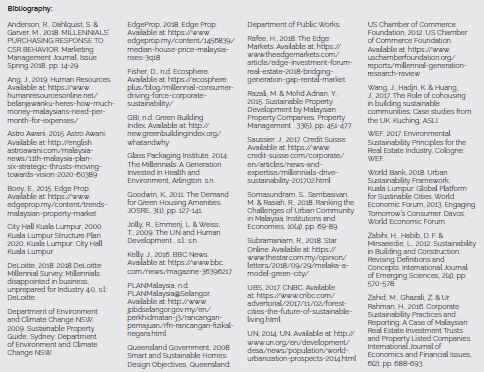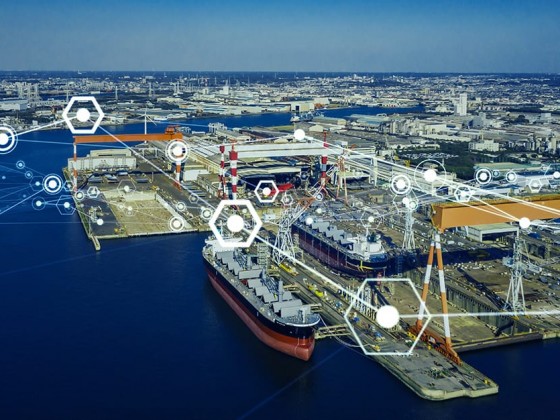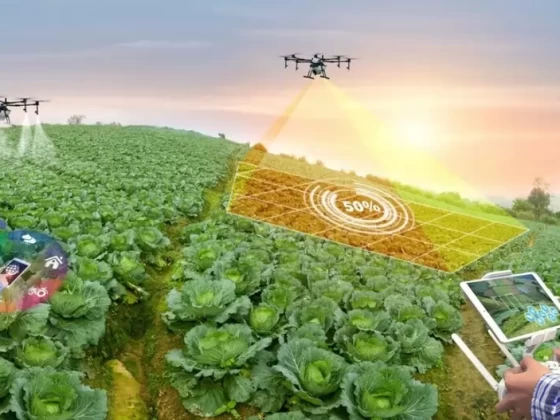by | Nik Sufini Nik Mohamed, sufini@might.org.my | Mohd Hasan Mohd Saaid, hasan@might.org.my
Imagine living in a house that offers you utmost comfort, stateof- the-art security and energy efficiency. All of your home equipment, gadgets and small appliances, from lighting, heating to your health sensors, all communicate with one another. What’s more, all of these are at the convenience of your fingertips and can be configured on the fly via an app on your smartphone.
Add to the list your entertainment system and air-conditioning controls that are connected to the main security system of your residential compound. Additionally, your house is powered by solar panels that are fitted on your rooftop, a rainwater containment tank and a food composting machine in the kitchen. built using eco-friendly building materials. The residential compound too, is designed with lush greenery surrounding it and vibrant flora landscapes. It is a sanctuary of eco-friendly living that promotes sustainable living.
To top it all off, the residential compound is located in an urban area with interconnected public transportation centre and public amenities. This is the utopian housing development scenario in Malaysia dreamed of by many.
Currently, multiple forces are at play changing housing trends and family dynamics. And there appears to be an exhaustive list of items that can contribute to a smart and eco-friendly living.
Over the next decade however, forces such as digital-native future generations, higher technology usage among families, constrained finances, security concerns, and aging population will be the main drivers of change if current trends continue to develop.
The changing lifestyles at home
Family lives and urban living are in tremendous flux worldwide. These changes are driven by changing family formats, population aging, evolving marriage and diversity norms, and inevitably, new technologies. In the decades ahead, the confluence of social and technological trends will begin to change the very nature and functions of real estate, altering the roles of families and family dynamics.
Two other strongly emerging concepts are that of multi generational housing, and cohousing. Within a household, there can be up to three different generations i.e. the baby boomers, the millennials and Generation Y or Z. This is the multigenerational family household (Kelly, 2016). Cohousing on the other hand, is a strong-knit community that lives together in a sustainable and environment-friendly manner. These two concepts are important because more people are paying attention to the quality of living, the environment and sustainable lifestyle and are not limited to the millennials alone (Wang, et al., 2017). Most generations are now gearing toward building a resilient and sustainable community for themselves. Multi-generational households will also become more common as they promote shared resources with the rising cost of living, hence are exposed to the awareness of a more sustainable living.
Demand driven by millennials who are lifestyle centric
More people are now demanding a sustainable lifestyle, starting with the very basic needs of mankind which are food, clothing and shelter (Jolly, et al., 2009). The demand for a sustainable lifestyle however, is driven strongly by the millennials (World Economic Forum, 2013). These are individuals born between 1980 and 1998 (US Chamber of Commerce Foundation, 2012). They are receptive to global issues and they go for brand characteristics that relate to sustainability. They are climate conscious and they believe they are agents for change. Millennials are notorious for their different interests, workplace behaviour and fickle spending habits, so much so they are labelled the “Me me me” generation (Rafee, 2018). In the context of Malaysia’s population, millennials or Gen Y, between the ages of 24 and 38 make up the largest segment with purchasing power (26%). This is followed by Gen X (39 to 53 years of age, 17%), baby boomers (54 to 72 years of age, 12%) and the silent generation (73-year-olds and above, 2%). Although
they are dubbed as “me me me”, they are the generation most concerned with sustainable lifestyles, and many of them say that being eco-friendly would improve quality of life, including where they live (Glass Packaging Institute, 2014). The millennials’ buying behaviour is not only affected by the end product but how a company arrives at the end product or service along the value chain (Anderson, et al., 2018). Also, the purchasing power of millennials need to be taken into consideration. They would switch to another brand they see is associated with a strong cause (Fisher, n.d.) and want reassurance from companies that ethical practices are significant (DeLoitte, 2018).
The millennials are a growing customer segment and they demand transparency in addressing social aspects, the environment and other global challenges, and this drives a stronger brand image. They are the driving force for corporate sustainability (Fisher, n.d.) and are the most sustainability conscious generation (Saussier, 2017). This lifestyle is driven by today’s high cost of living as 86% of millennials in Malaysia rated it as their top three biggest concerns, according to a research by iMoney.my.
Affordability
Young adults are weighted down by student loans, car loans and credit card bills. There are too many debts for them
to settle before they can even think of purchasing a house. Millennials who earn a monthly income of RM3,000 can only afford houses priced at RM200,000, based on the study, “Measuring the Gen Y housing affordability problem” by the International Journal of Trade, Economics and Finance.
In the UK, research by the House of Commons Library found that 59% of households led by a millennial are renting, with only 38% owning their own homes. Twenty years ago, young people were more likely to own than rent. On property ownership, only 33% of millennials in Malaysia can afford to own a property, according to HSBC’s ‘Beyond the bricks’ study’.
The current dilemma is that house prices in urban areas are not cheap. The state with the highest median house price is Kuala Lumpur, at a whopping RM550,000, followed by Putrajaya at RM400,000, Selangor at RM382,000, and Johor at RM345,000 (Boey, 2015). Eco branded houses cost a lot more such as Setia Eco Park with prices in the range of RM 2 million per unit (iProperty.com).
In early March 2019, The Employees Provident Fund (EPF) together with the Social Wellbeing Research Centre (SWRC) of University of Malaya, unveiled the Belanjawanku: Expenditure Guide for Malaysian Individuals and Families as part of a guideline to provide estimations of minimum monthly expenditures on various types of goods and services for various households residing in the Klang Valley that will allow Malaysians to attain a reasonable ‘standard of living’ or well-being (Ang, 2019).
According to a report published in April this year by Khazanah Research Institute (KRI), house prices in the country have escalated at a CAGR of 9.1% since 2009, with no significant improvement in housing affordability between 2002 and 2016. It was also reported that there is a mismatch between annual median salary and median house price (Khazanah Research Institute, 2019). The Housing Buyers Association has voiced concern that the price of property isexpected to increase at a higher pace than salary increment (Kaur, 2019).
Accessibility trends
Millennials are drawn to transit-oriented developments (TOD) or developments that are highly accessible and connected to the LRT, MRT and other public modes of transport. Mixed-use projects are touted as “greener” developments as they make the best use of the land and supporting infrastructure. Connectivity to a transport hub, such as a mass rapid transit or bus station, allows residents to take public transport and scale down the use of private cars. Convenience is also highly sought after.
Sustainable living and the Sustainable Development Goals
“The world’s growing cities are at the leading edge of global sustainability agenda. How cities choose to respond to challenges can greatly influence the prosperity and quality of life of their residents” (World Bank, 2018). Urbanisation is unprecedently one of the major issues facing the world today with an estimated two thirds of the world population living in the cities by 2050 (UN, 2014). The United Nations announced the 17 Sustainable Development Goals (SDGs) in 2015 with SDG 11 for sustainable cities and communities, and the objectives are designed to make cities safe, resilient, inclusive and sustainable. Besides creating smart and environmental-friendly homes, incorporating greenery into a residential development is a must, hence creating ‘forest cities’ (UBS, 2017), and this results in the increased absorption of carbon dioxide.
For property buyers, a development that helps conserve energy and water would be more appealing compared to the average development. This includes energy efficient appliances.

Real estate development trending toward environmental and sustainable responsiveness
Real estate is one of the biggest contributors of carbon emission (20%) and consumes over 40% of global energy annually (WEF, 2017). On top of this, the World Economic Forum reported that buildings use 3 billion tonnes of raw materials annually and by 2030, investment in real estate will increase by a hefty 60% (USD 69 trillion) leading to a significant increase in CO2 emissions (56%).
The New South Wales Department of Environment and Climate Change defines sustainability in the commercial property sector by measuring impacts of climate change and potable water availability. In addition, it considers the linkages between property and social infrastructure to create a sense of place (Department of Environment and Climate Change NSW, 2009). Sustainable property construction would take into account maximising human comfort (by building in smart solutions and green surroundings), using environmentally friendly building materials to minimise ecological damages and carbon emission (Zabihi, et al., 2012). Sustainable property development in Malaysia is still lagging behind other countries (Razali & Mohd Adnan, 2015) but it is improving. This is evident with the Green Building Index (GBI) rating system to promote sustainability in real estate (GBI, n.d.) and real estate companies in Malaysia through their increased investment in social responsibility practices that contribute further to sustainable real estate development (Zahid, et al., 2016)
Policies supporting housing development in Malaysia
Malaysia, in its 11th Malaysia Plan (2015-2020) supports SDG11 with one of its strategic thrusts of improving well-being for all (Astro Awani, 2015). There are several other programmes, policies or guidelines to support the country’s urban development such as the National Green Technology Policy and the National Physical Plan (Somasundram, et al., 2018). Under the guidelines for housing development in the National Physical Plan released in 2010 (PLANMalaysia, n.d.), housing developments must be conducive to the environment and must be liveable, where liveable means eco-friendly and includes smart and sustainable features (Queensland Government, 2008). State level structure plans are also available to serve as a guideline. For example, the Kuala Lumpur Structure Plan 2020 has a section dedicated to housing and as a policy guideline, good quality housing is one which puts the highest quality on design and layout, environmental responsiveness, workmanship, materials, landscaping, maintenance, upgrading, enhancement of public spaces, and enhancing connectivity (City Hall Kuala Lumpur, 2000). The State of Melaka plans to power daily activities including housing from its 7248-hectare Melaka World Solar Valley by 2020 (Subramaniam, 2018), hence diverting to the use of renewable energy to power homes.
In 2007, Bursa Malaysia required listed companies to disclose their CSR activities, but they were not compulsory. A sustainability reporting framework was introduced in 2015, and from 31st December 2018, all public listed companies (PLCs) must produce a sustainability report. Bursa Malaysia’s definition of the economic pillar of sustainability is not about the financial position of a company, but improving the economic systems at the local, national and global levels. Since this has just become compulsory for PLCs, it is believed that more buyers will be exposed to the importance of such practices by companies and any such reporting would have more impact on buyers’ purchasing decision, including how the business creates economic impact by creating more jobs in the market, as mentioned by Kanji & Chopra (2010).
The Green Building Index (GBI) of Malaysia’s assessment framework includes energy efficiency, indoor environment
quality, material resources, water efficiency, sustainable planning and management, and innovation (GBI, n.d.).
Despite efforts by the real estate sector to support sustainable development, it is still under performing because of the lack of an integrated approach in building and managing buildings (WEF, 2017).
Impact on social lifestyle
In the mid-term review of the 11th Malaysia Plan, the Government recognised the need to improve affordability of owning houses and will increase mean monthly household income to RM 8,960 in 2020, as well as to ensure faster and sustainable increase for the B40s (Ministry of Economic Affairs, 2018). To date, more of the poor, low- and middle-income households were able to buy houses under the affordable public housing programmes. However, in the context of this article, affordable may not necessarily mean smart or ecofriendly.
Apart from the dilemma of paying off student loans and other bills, and high costs of housing that impedes house buying decisions for many, there is a growing trend of the “Sandwich generation” impacting one’s lifestyle due to both emotional and financial pressure and burdens. This term describes the middle-aged population who are struggling with the challenges and responsibilities of managing between providing for their children and their aging parents, both financially and emotionally.
Affordability issues would also influence the type of property a young or middle-aged worker living in an urban area would buy and would be pushed to consider high rise and high-density properties. High-density properties are mostly owned by low income earners. The environment however is not very conducive for their childrens’ development as safety and security issues are a concern. Not all families will be able to afford the latest emerging and smart technologies. The digital divide used to be about access to PCs and broadband. In the future and perhaps even now, it could be about being able to afford adaptive, conducive and safe living spaces as well as a healthy ecosystem.
Technologies however, become more affordable as prices decline. Constant connectivity is also expanding parent-child for example, via texting and Facebook. In a world where social life is so often virtual, people are increasingly saying “their only resource is their family” when they need to confide in someone or get help in an emergency. The transformative effects of technology on family life in the decade ahead could contribute to family bonds getting closer. Assistive housing technology could change aging population dependency in the near future, as Malaysians currently have to deal with a pressing situation in regard to housing trends in economic uncertainty.
Smart and eco-friendly living is much desired because the benefits are manifolds. One of them is cost savings with the use of energy efficient solutions especially on heating and cooling (Qureshi, 2018). Use of smart lighting will reduce carbon footprint and can be controlled via an application on a smartphone. Usage of water can also be saved, and simple smart devices can be used to detect leakages or utility wastages. In addition, when environmental impact is reduced, the quality of the air we breathe would improve. The use of sustainable building materials means refraining from materials that are carcinogenic or toxic, hence, improves our health considerably. In a nutshell, we get comfort, safety, security and health, all under one roof, as well as the green and interconnected surroundings.
Conclusion
In a bid to support and urge smart and eco-friendly homes to be more affordable, the government should set a minimum requirement for developers to ensure that housing developments will always include smart and eco-friendly features, as well as ensure public housing programmes incorporate smart and eco-friendly features. Aspiring homebuyers can channel their voices to the Real Estate and Housing Developers Association (REHDA), and also relevant ministries. In supporting the SDGs and toward becoming a developed nation, the government should also make a push to make it a requirement for real estate developers to reduce their carbon footprint and safeguard the environment. For Malaysia, there are a number of local innovations that can be incorporated. One example is the food composting solution called the Munchbot, by Mentari Alam Eko Sdn Bhd (www.maeko.com.my) which composts food within 24 hours. This can be installed in every home and is a sustainable lifestyle solution. The government should also devise lenient lending instruments to allow for the middle, and lower income earners to be able to buy a smart and eco-friendly home, and to provide incentives to the developers, especially smaller ones. A smart and eco-friendly home therefore, should not be an option, but rather, a necessity and at an affordable price.
Smart and eco-friendly homes, a green surrounding and connectivity with transit-oriented-developments, as well
as efficient waste management would have positive social impact as it would improve our livelihood with cleaner air,
good traffic management and reduced greenhouse gas emissions. A sustainable ecosystem that encapsulates
compact, connected and safe development with modern public transport systems will improve the wellbeing of its dwellers and also spur economic growth. Additionally, the New Climate Economy reported that investing in sustainable urban infrastructure generates potential energy savings of $16.6 trillion by 2050, and this includes investment in smart and eco-friendly residential developments.











